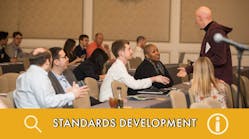Lighting for Health and Wellbeing conference perspective shows significance of the LED (MAGAZINE)
We held our first Lighting for Health and Wellbeing conference in the US this past July in Newport Beach, CA. I wanted to offer a few thoughts in the short time I had between the conference and our deadline for this issue. There will be a tremendous impact on health and wellbeing attributable to light, and the possibilities are far broader than I understood and far broader than we have written in the past. LED technology, while it has some issues, is fundamentally critical to the pursuit of the broad possibilities.
Interested in articles & announcements on human-centric lighting?
There are almost no definitive statements that can be made relative to lighting for health and wellbeing or what some call human-centric lighting (HCL). For example, blue spectral energy or blue-rich light is neither good nor bad. It just depends on the application and the implementation.
A number of speakers did address the oft-claimed blue-light hazard that suggests phosphor-converted LEDs based on a blue pump have a blue energy peak that could damage human eyes. Several speakers showed that the amount of blue energy received under typical LED lighting pales in comparison to what happens in a very short period under sunlight. Indeed, the European Union released research coming to a similar conclusion just before our conference.
But what about blue energy and good or bad? As we know, blue energy in the morning can boost alertness, but it's bad at night in terms of inhibiting sleep. But it's not so simple to deliver the early blue and eliminate the late blue. Speakers discussed how psychology and society can conspire to squash the impact of carefully designed lighting.
Still, there are devils in the details. Some advocate removing blue energy completely in nighttime lighting. It is probably less expensive to just minimize blue.
What about red energy? It seems that maybe we need more red than previously thought, both for a direct impact on our wellbeing and for an indirect impact in terms of clinicians seeing what they need to in a healthcare facility.
Have you head of the Cyanosis Observation Index (COI)? I went back and looked and we have mentioned it a handful of times over the years. I should have been more on top of the subject. Australia has done some great things with lighting that delivers high COI scores in terms of preventing serious disease because clinicians are able to see important clues to a patient's immediate health under such light. We will have more in our conference writeup and other near-term feature articles.
Our PennWell LED & Lighting Network team finished the day in Newport Beach on a high note. Attendees at the end-of-the-day network reception seemed very happy with the day. We've learned that the attendee conference evaluations were positive. It was still fulfilling to see an attendee post a column on LinkedIn about the impact of the day.
Looks like I will shortly be planning next year's event. In this health and wellbeing niche, it seems like things are changing daily. And LEDs are at the center of it all, because it's the first light source that gives us full ability to tailor spectrum.

Maury Wright | Editor in Chief
Maury Wright is an electronics engineer turned technology journalist, who has focused specifically on the LED & Lighting industry for the past decade. Wright first wrote for LEDs Magazine as a contractor in 2010, and took over as Editor-in-Chief in 2012. He has broad experience in technology areas ranging from microprocessors to digital media to wireless networks that he gained over 30 years in the trade press. Wright has experience running global editorial operations, such as during his tenure as worldwide editorial director of EDN Magazine, and has been instrumental in launching publication websites going back to the earliest days of the Internet. Wright has won numerous industry awards, including multiple ASBPE national awards for B2B journalism excellence, and has received finalist recognition for LEDs Magazine in the FOLIO Eddie Awards. He received a BS in electrical engineering from Auburn University.





